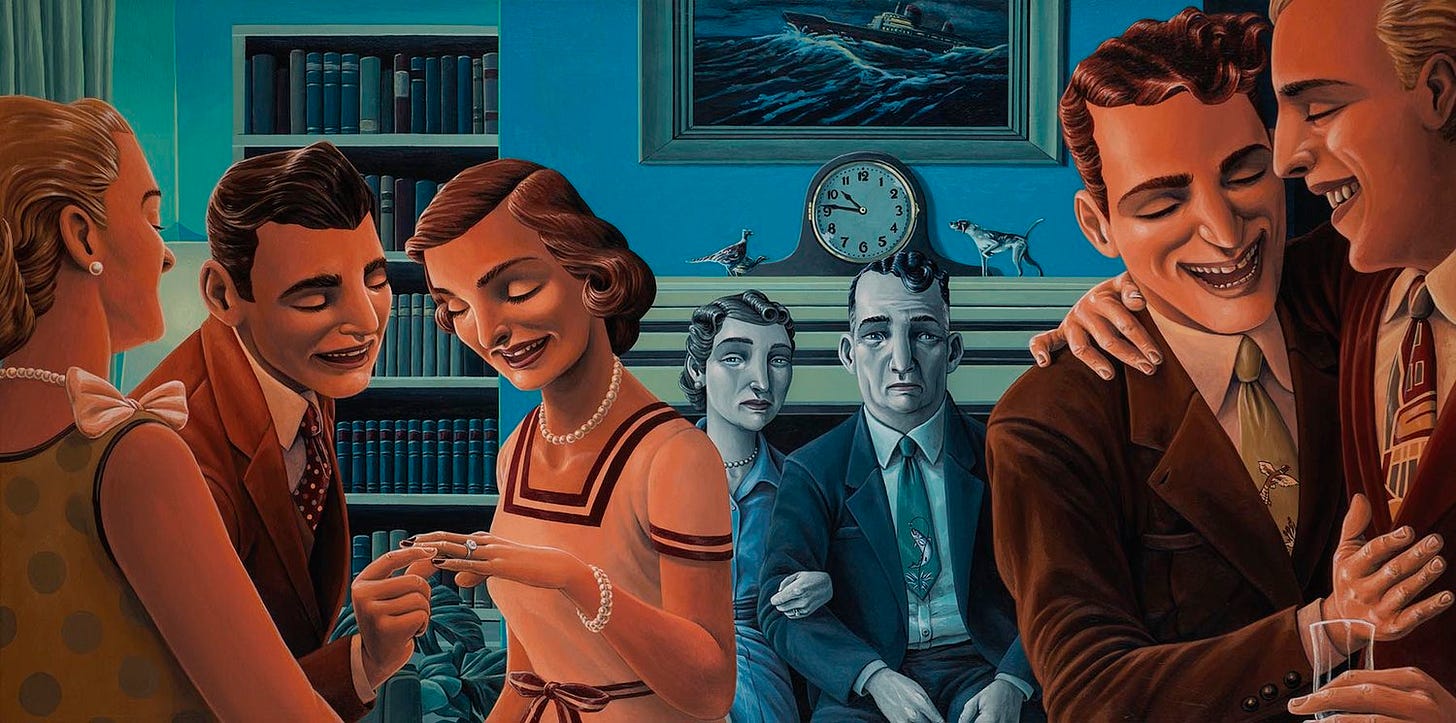Stories
Story telling in art goes back to the caves and probably beyond. Those first pictures and other graphic symbols were not graffiti or decoration, they had a purpose—they thundered with emotion and conceptions.
Later, art was used to elevate and celebrate rulers. From the Chinese to Egyptians to Mayans—it was about the glory of the kings and their conquests. Western Christian art told the stories of the bible to people who couldn’t read…to connect the experiences and beliefs of the saints to their own lives.
Eventually, art became it’s own reason for being, turning from religious and royal narratives as its only purpose. But story telling wasn’t abandoned. Down through the centuries artists have teased you with visual questions, like Jan Van Eyck’s, “The Arnolfini Marriage,” and everyone from scholars to the simply curious are still debating the answers.
Winslow Homer’s “The Gulf Stream” is a novel in itself.
Gregory Ferrand is an artist with a need to connect, visually and psychologically. He brings you in as an actor in the narrative. You’re free to bring your own interpretations, but you can’t help but wonder what’s going on here.
Beneath the forced jubilation and jocularity of an engagement, there is another story—one of distress and perhaps anguish. This could be a metaphor for our own singular lives. We may present a calm, confident or even jubilant front while angst is eating at us from the inside. PTSD can do that unless we use it to power an inner strength that will allow us to climb above the emotional morass and tell our own spiritual story.





I’d never heard of Gregory Ferrand before. His painting here has made me curious to see his other works. I like how you tied his central despairing parents to angst within all of us beneath the show of studied happiness.